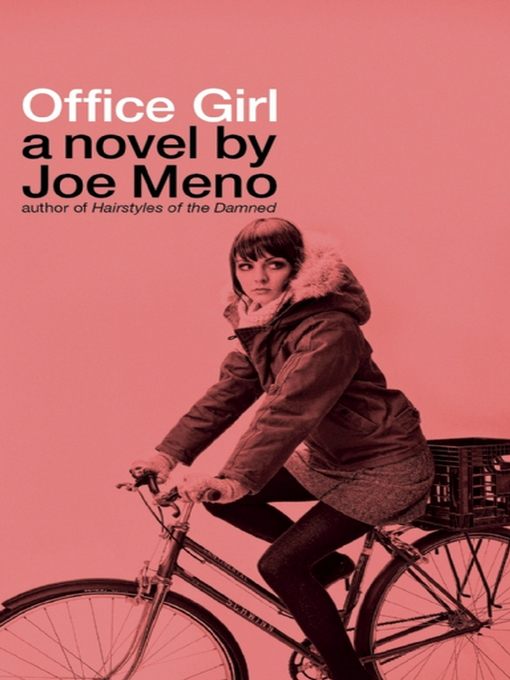
Office Girl
A Novel
کتاب های مرتبط
- اطلاعات
- نقد و بررسی
- دیدگاه کاربران
نقد و بررسی

April 16, 2012
In Joe Meno’s new novel, set in the last year of the 20th century, art school dropout Odile Neff and amateur sound artist Jack Blevins work deadening office jobs; gush about indie rock, French film, and obscure comic book artists; and gradually start a relationship that doubles as an art movement. They are, in other words, the 20-something doyens of pop culture and their tale of promiscuous roommates, on-again/off-again exes, and awkward sex is punctuated on the page by cute little doodles, black and white photographs (of, say, a topless woman in a Stormtrooper mask), and monologues that could easily pass for Belle & Sebastian lyrics (“It doesn’t pay to be a dreamer because all they really want you to do is answer the phone”). If the reader doesn’t recognize the territory being mined by the time Jack and Odile begin covering their neighborhood in cryptic graffiti credited “ALPHONSE F.” Meno (Hairstyles of the Damned) equips the book with two alternate titles—Bohemians and Young People on Bicycles Doing Troubling Things—that ought to straighten things out. High on quirk and hipster cred, the novel is light as air, surprisingly unpretentious, and extremely kind to its larky, irony-addled protagonists. Meno is really the heir to Douglas Coupland, who introduced this crowd in 1991’s Generation X. However, Meno’s sympathy for his heroes’ frustrations makes his novel more than merely endearing. Agent: Maria Massie, Lippincott Massie McQuilkin.

June 1, 2012
Sometimes things just don't work out, no matter how hard we wish they would. But there's irony, so we have that going for us. Right? The talented Chicago-based Meno (The Great Perhaps, 2009, etc.) has composed a gorgeous little indie romance, circa 1999. The titular protagonist is Odile, the arty, brazen and fearless 23-year-old who loves graffiti, the Velvet Underground's "After Hours," riding her bicycle around the city, and the married guy she can't have. She's also chronically unemployable, generous to a fault and susceptible to dumb mistakes like offering a sexual favor to a co-worker who can't keep his mouth shut, forcing Odile to quit and go take a crap job in customer service. Jack is a few years older and a spiraling tragedy of his own making. An art school graduate with no creative traction, he's devastated by his abrupt divorce from Elise, to whom he was married less than a year. To fill his soul, Jack records things, and Meno turns these fleeting sounds into mini-portraits. "Everything is white and soft and dazzling," he writes. "And Jack, in front of his apartment building, can't help but stop and record as much of it as he can. Because it's a marvel, an explosion, a cyclone of white and silver flakes." The encounter between these two creative iconoclasts is less courting and more epiphany, as they discover the amazing and transformative effects of love with a joy as naive as that of children. Their story can be artificially cute, with secret messages scrawled on city walls and dirty magazines awash with surrealistic Polaroid snapshots. But when things Get Weird as things do when we're young, Meno is refreshingly honest in portraying the lowest lows and not just the innocent highs. A sweetheart of a novel, complete with a hazy ending.
COPYRIGHT(2012) Kirkus Reviews, ALL RIGHTS RESERVED.

October 1, 2012
Meno's 2004 novel, Hairstyles of the Damned, retains a loyal cult following, but that won't happen with this Y2K-set book. If this is a send-up of romantic comedies, then Meno isn't doing enough subverting. He still intimately knows his milieu: young, disaffected white couples wrestling with work, love, and the uncaring urban landscape. The protagonists here are art school dropout Odile, who huffs Wite-Out at her many office jobs, and mopey graphic designer Jack, whose wife has just left him for Berlin. They begin an affair and a micro-art movement. Sort of. "Jack puts his hands on her breasts from behind, and she does not say anything or move his hands away, and almost by accident he murmurs, I love you, ' and she says, 'What?' and he says, 'Nothing. I just had to sneeze.'" Photographs by Todd Baxter and drawings by Cody Hudson are interspersed with mixed success. VERDICT Meno's descriptions of snow and Chicago's landscape can be lovely, even moving, but there's a problem when these passages are more compelling than the human characters and the plot.--Travis Fristoe, Alachua Cty. Lib. Dist., FL
Copyright 2012 Library Journal, LLC Used with permission.

Starred review from May 15, 2012
Most tales about fleeting yet indelible love affairs are set in summer. Meno's story of tenuous ardor between two artistic, ambivalent, and disaffected misfits takes place in winter in Chicago. We first meet Odile as she rides her bicycle through the snow. An art-school dropout, she has held 17 lousy jobs in three years and expresses her frustrations by drawing lewd graffiti with a silver marker. Skittish art-school graduate Jack is also adrift, riding his bike in the snow while carrying a small silver tape recorder to capture the stark or strange or sublime sounds of the city. The two meet while working in a Muzak sales office. It's 1999, the faltering end of a century of brutality and invention, and nothing seems anchored or meaningful. Bold and angry Odile starts a guerrilla art movement of two in favor of unimportant things, and sweet Jack reluctantly joins her in risky street performances. Flashbacks reveal the sources of Odile and Jack's wariness of romance and ambition. Following his encompassing drama of family and war, The Great Perhaps (2009), Meno has constructed a snowflake-delicate inquiry into alienation and longing. Illustrated with drawings and photographs and shaped by tender empathy, buoyant imagination, and bittersweet wit, this wistful, provocative, off-kilter love story affirms the bonds forged by art and story.(Reprinted with permission of Booklist, copyright 2012, American Library Association.)

























دیدگاه کاربران